#davos hanich
Text
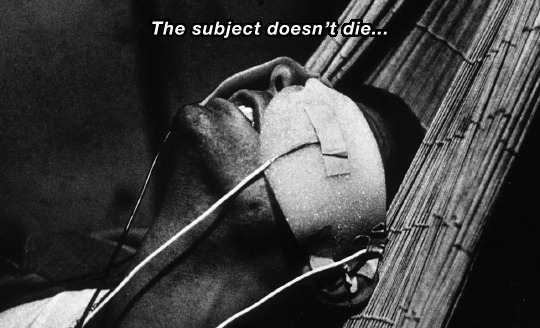

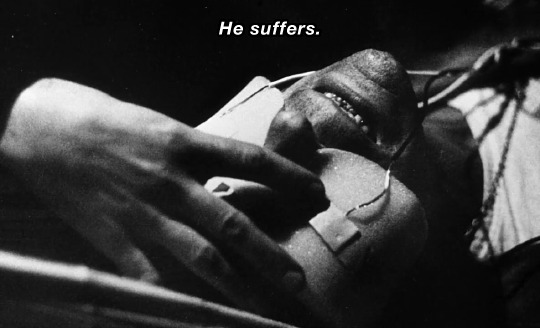


La Jetée (1962, dir. Chris Marker)
#movies#scifi#french cinema#la jetée#chris marker#1960s#my gifs#...well. they're not gifs. it's a still image film.#davos hanich#jacques ledoux
204 notes
·
View notes
Photo

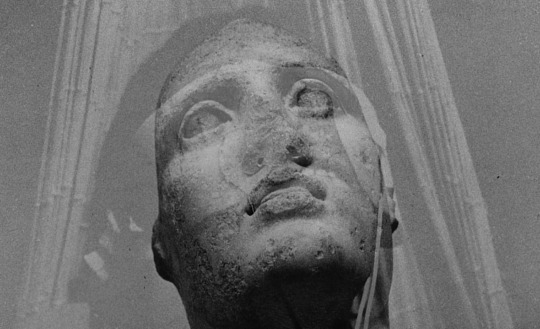
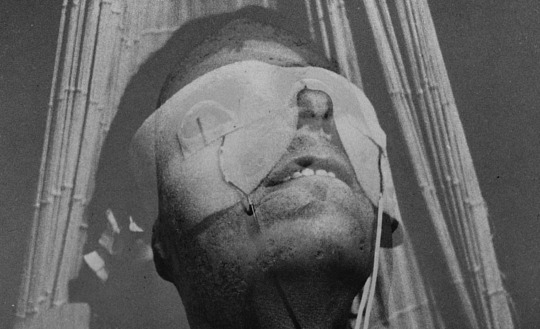

La Jetée | Chris Marker | 1962
Davos Hanich
187 notes
·
View notes
Photo
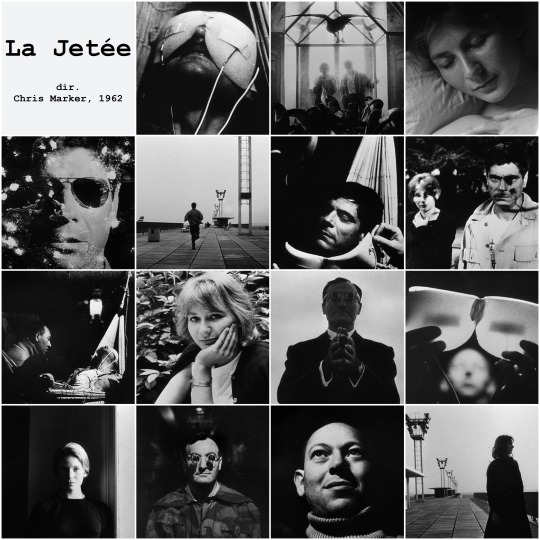
La Jetée
directed by Chris Marker, 1962
13 notes
·
View notes
Text
クリス・マルケル『ラ・ジュテ』
youtube
20240220
クリス・マルケル 『ラ・ジュテ』(1962)を、Youtubeでフランス語版、日本語版を続けて視聴。スチール写真から再構成してナレーションをかぶせた映画かとおもっていたけど、いったんフィルムで通して撮影したのをスチール処理したものらしい。
通常どおり撮影したフィルムをストップモーション処理したスチル写真のモンタージュで構成され、シンプルかつ効果的なナレーションで語られる。
この映画における演出というのはどのように分析されるんだろうか。
主演のダヴォス・アニク(Davos Hanich, 1922-1987) はいかにもフランス人というような顎の張りをしている。本業は画家・彫刻家だそうだ。パリのエコール・デ・ボザールでフェルナン・レジェに学び、助手にもなったらしい。この映画のときには、40歳というからアーティストとしてもそれなりな時期だったのでは。パリ19区ラ・ヴィレット門近くのマルセル・ムルディ広場(Square Marcel-Mouloudji)の噴水彫刻が彼の作品。ほかにロヌ・アルプ(Rhône-Alpes)地方オト・サヴォワ(Haute-Savoie)県のまちアラシュ・ラ・フラス(Arâches-la-Frasse)のフレヌスキー場(Station de sports d´hiver de Flaine)の駐車場での金属ワイヤーを用いた彫刻が代表作としてあげられるようだ。
クリス・マルケルとは、第二次世界大戦の頃、スイスに亡命中に出会ったとのこと。レジスタンスの生き残りだった。
主演女優のエレヌ・シャトラン(Hélène Châtelain, 1935-2020)は留学中の友人だったクレルに似ているなと思った。両親はロシアとウクライナの出身だそうだ。1960年代前半にアルマン・ガティ(Armand Gatti, 1924-2017)と出会って舞台女優としてのキャリアをスタートさせ、1973年から自分自身も映画監督として数多くのドキュメンタリーを手掛けたとのこと。また、そのルーツからロシア文学、文化の紹介にも努めた。
0 notes
Text
O FUNDO DO AR É VERMELHO
(Le Fond de L'air est Rouge)
Direção: Chris Marker
França, 1977.
Ajustar legendas em português nas configurações de reprodução do YouTube.
As esperanças e as decepções suscitadas pelos movimentos revolucionários de 68 no mundo inteiro. Desde o regime chinês ao cubano, passando pela Primavera de Praga ou os movimentos estudantis e operários franceses, Marker nos relembra constantemente que não se pode simplificar o que nada tem de simples: as manifestações populares, os movimentos da política, os rumos incertos da História e da sociedade. O filme é composto por duas partes: “As mãos frágeis” e “As mãos cortadas”, ambas com 90 min (versão de 1998). Com as vozes de: Jim Broadbent , Cyril Cusack , Laurence Guvillier, Davos Hanich , François Maspero, Yves Montand François Périer Sandra Scarnati Jorge Semprún Simone Signoret.
Parte 1: https://youtu.be/p6ZBjMhg9-c
Parte 2: https://youtu.be/sxs5rVnAPG8
youtube
12 notes
·
View notes
Text
Sci Fi Month La Jetee
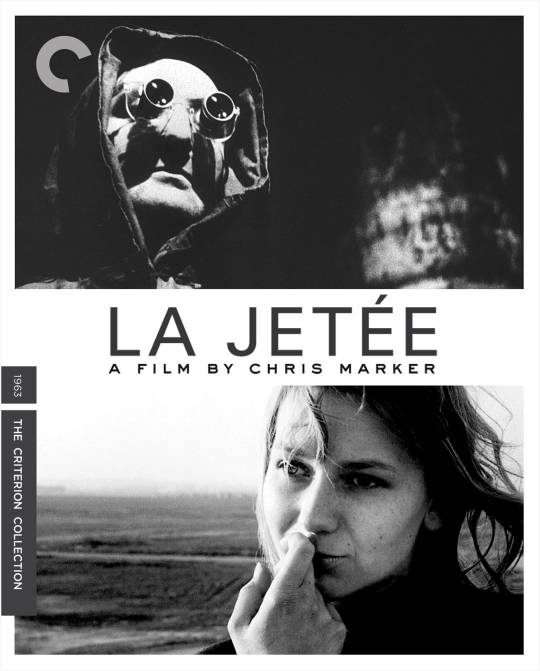
This 1962 short tells the story of a prisioner (Davos Hanich) in a post apocalyptic world who is used in an experiment in time travel,and while in the past he meets and falls in love with a woman (Helene Chatelaine)
OK full disclosure :A lot of people in my life assume I am a film expert .....I am not .I have never taken a class ,there are genres I am unfamiliar with ,and as a Dumb American ,It is only realitively recently have I explored international films .I am just a crazy dude obsessed with the magic of cinema.If you want someone to really go into the meanings of La Jetee ,sorry you arent gonna get that here.I can only share my oppinion on La Jetee ,with this being my first time seeing it
That said I liked it quite a bit . Admittedly this film is outside my wheelhouse in that it is a bunch of stills and a narrator .....But that makes it unique . I like the story of a man finding love and peace in the past ,and the twist at the end is great .Now I can see people dismissing it as artsy weirdness ,and I will admit the museum scene dragged for me ,but it is so unique and such a good story ,I very much like the film as a whole
Oh ,I better mention this ,in the 90's it was remade as the movie 12 Monkies ,which I have seen but barely remember ,and honestly it makes me wanna watch 12 Monkies again
Overall I reccomend La Jetee if your a fan of diffrent sort of time travel stories ,or are in the mood for something diffrent in general
@the-blue-fairie @amalthea9 @ariel-seagull-wings @metropolitan-mutant-of-ark
7 notes
·
View notes
Text
Le Fond de l'air est rouge, Chris Marker

Le Fond de l’air est rouge is a film about the struggles between the mid-1960s and 1977. It is composed of two parts preceded by a prologue. The first part is entitled “Les Mains fragiles” and the second part is entitled “Les Mains coupées”, these two parts are themselves subdivided into two sections. This three-hour documentary, in its final version, is a montage of archival images from various sources. There are images of television news, militant films and even images of fiction feature films. These archives come from all over the world and require the viewer to have some knowledge of the political movements of the sixties to be fully understood. Indeed, the images are not explained didactically, it is their relationship that generates meaning.
Le Fond de l’air est rouge tells history through associations of images creating imaginary points of contact between social movements taking place in various places. These places are brought together by their visual resonances rather than by their logical links (cause and effect, common context, etc.).
In this film, Marker wanted, whenever possible, to bring the document closer to the conditions of its creation. Thus, the people who filmed the events that make up the film are invited to comment on their images to reveal their meaning. The second hour of the first part entitled «Mai 68 et tout ça» begins with the following sentence « Pourquoi – quelques fois – les images – se mettent-elles – à trembler ? ». Chris Marker testifies « Moi, ça m’est arrivé en mai 68, boulevard Saint-Michel... » and Davos Hanich « Moi, à Prague, l’été 68… Quand j’ai vu les rushes, j’ai vu le tremblement. J’avais maîtrisé mes mains, mais la caméra avait tout capté. »
For Marker, the cameraman does not have enough perspective on his images at the time of their shooting. He is unable to measure their historical significance. But when, a few years later, these images are confronted with other more recent images or from another country, they reveal all their power of meaning. For example, in the first part of the film, the Spanish writer, screenwriter and politician Jorge Semprun comments on the events of May 68 : « les rues de Paris se sont mises à ressembler à celles de toutes les grandes villes d’Europe et d’Amérique en l’an 68 ». This rapprochement makes it possible to imagine that May 68 takes place in a context of huge revolts. This gives the images of Paris a greater meaning.
Clara Réthoré
0 notes
Text
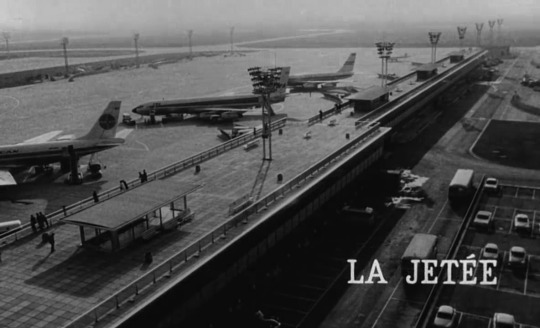
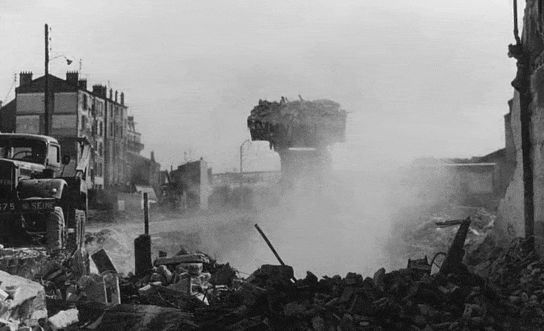
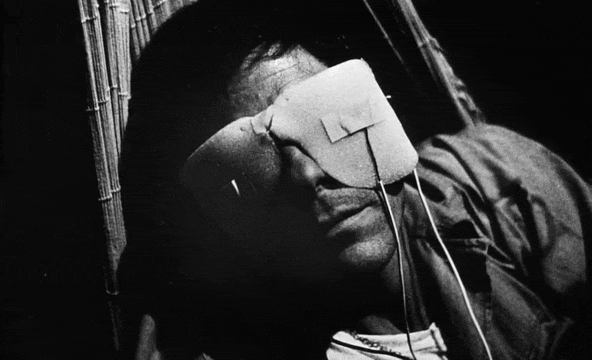
Chris Marker, {1962} La Jetée
#film#gif#chris marker#la jetée#la jetee#Hélène Chatelain#davos hanich#helene chatelain#1962#black and white#short film#experimental film#landscapes#dissolves#france#people#1960s#male filmmakers#ruins#war#scifi
111 notes
·
View notes
Photo

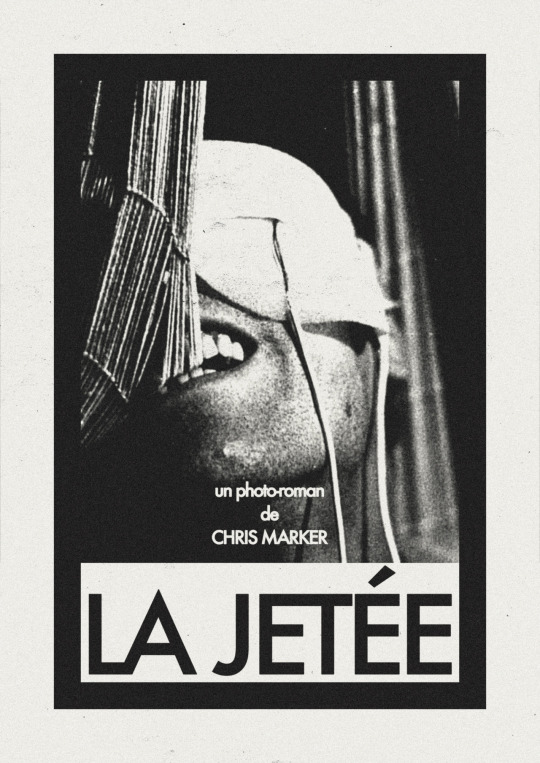


La Jetée (1962) Chris Marker
June 17th 2021
#la jetée#1962#chris marker#davos hanich#helene chatelain#jean negroni#jacques ledoux#the pier#short#favourite
4 notes
·
View notes
Photo

La Jetée, 1962
#la jetée#chris marker#davos hanich#hélène châtelain#film#movies#cinema#vintage#french new wave#1960s
1K notes
·
View notes
Text
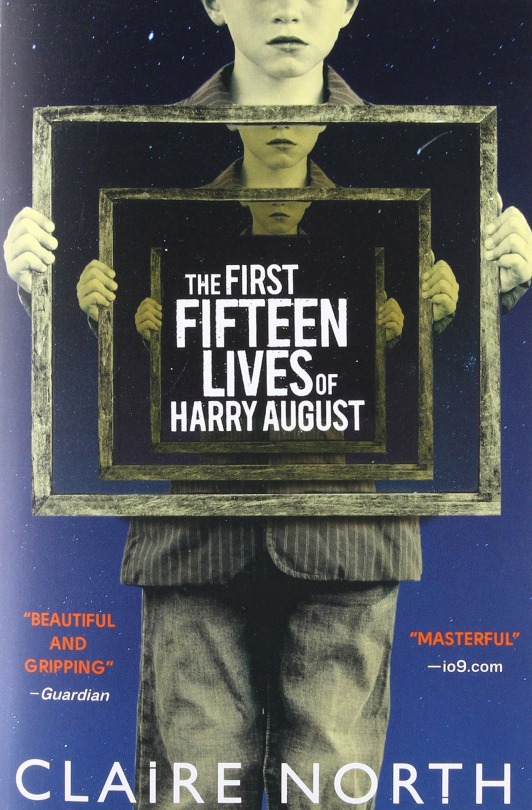
The First Fifteen Lives of Harry August - Claire North
Some stories cannot be told in just one lifetime. Harry August is on his deathbed. Again. No matter what he does or the decisions he makes, when death comes, Harry always returns to where he began, a child with all the knowledge of a life he has already lived a dozen times before. Nothing ever changes. Until now. As Harry nears the end of his eleventh life, a little girl appears at his bedside. "I nearly missed you, Doctor August," she says. "I need to send a message." This is the story of what Harry does next, and what he did before, and how he tries to save a past he cannot change and a future he cannot allow.
Read if You Like:
Science Fiction
Fantasy
Time Travel
Historical Fiction
Thriller
Recommended if You Enjoy:
Blake Crouch (Recursion, Dark Matter)
Stuart Turton (7 1/2 Deaths of Evelyn Hardcastle)
Amal El-Mohtar (This is How You Lose the Time War)
La Jetée (Short Film, 1962)
12 Monkeys (Movie, 1995)
3.5/5
#the first fifteen lives of harry august#claire north#science fiction#fantasy#time travel#historical fiction#thriller#Blake crouch#recursion#dark matter#Stuart Turton#7 1/2 deaths of Evelyn Hardcastle#this is how you lose the time war#amal el mohtar#la jetee#12 monkeys#authors#book recommendations#books#books & libraries#libraries#literature#what to read#what to read next#book reading#good books to read
13 notes
·
View notes
Text
La Jetée | Chris Marker | France | 1962
It’s as much a testament to its astonishing formal bravura as its striking political prescience and fatalist melancholy that La Jetée – despite a runtime of only half-an-hour – remains a seminal work of cinema, and in turn the iconoclastic Chris Marker’s single most celebrated work. Rarely has a film, let alone a short – and that too one as flamboyantly avant garde and sublimely ambiguous – achieved such timeless impact; in that context, Dziga Vertov’s dizzying Man with a Movie Camera, Keaton’s Sherlock Jr. and Buñuel’s Un Chien Andalou are three landmark shorts that immediately come to mind for having achieved pop-cultural posterity despite virtuoso experimentation. Impishly classifying itself a “photo roman”, it’s composed in the form of a montage of stunning high-contrast, grainy, evocative B/W photographs – the kind that Marker’s friend and fellow Left Bank auteur Varda, immensely inspired by this, would do a year later in her dazzling photo-memoir Les Salut Cubains – and that imbued it with haunting unreality, further heightened by its post-apocalyptic doom, visceral sci-fi terror and recursive narrative. It’s set in the aftermath of WWIII and nuclear holocaust which have turned Paris into radioactive debris; the survivors, as a result, are forced to live like rats in the underground sewers. There a Dr. Frankenstein is researching time travel by conducting hideous human experiments, and their latest subject is a man (Davos Hanich) profoundly haunted by pre-war image of a woman (Hélène Châtelain) at Orly Airport’s titular pier. Memory in its myriad complexities and expressions, therefore, formed its central theme, as did recollections from the WWII, including eugenics and other monstrosities that Nazi scientists had conducted, and maybe even doomsday paranoia that the Cold War engendered among many.
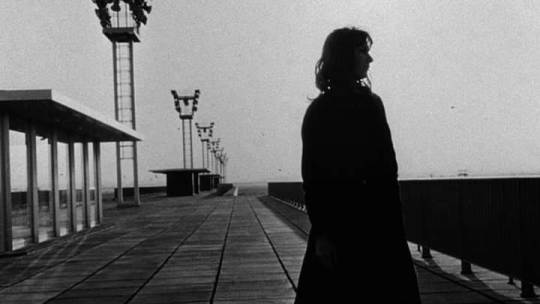
2 notes
·
View notes
Photo


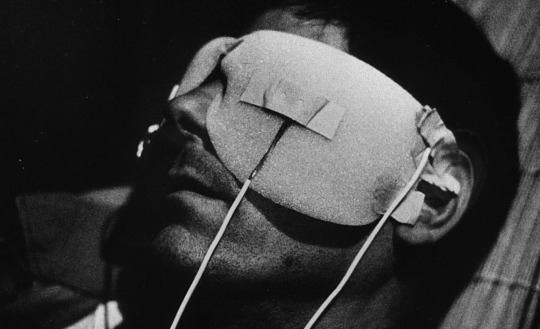




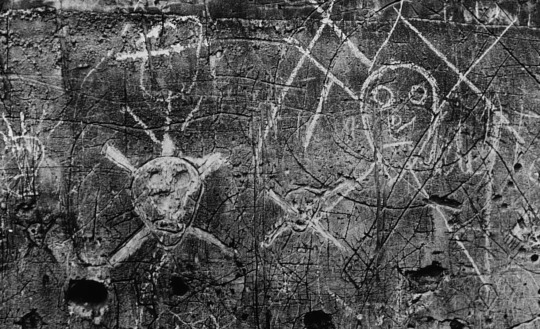
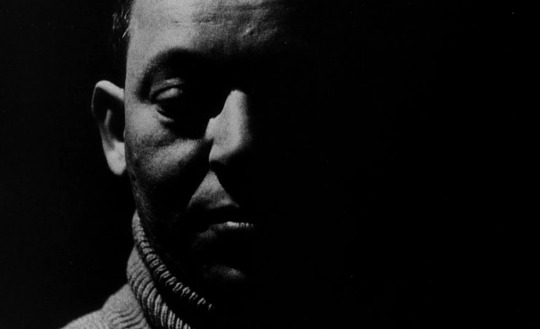

La Jetée | Chris Marker | 1962
32 notes
·
View notes
Text
Chris Marker : la jetée (1962): "mais l'esprit humain achoppait :se réveiller dans un autre temps, c'était naître une seconde fois, adulte"
Chris Marker : la jetée (1962): “mais l’esprit humain achoppait :se réveiller dans un autre temps, c’était naître une seconde fois, adulte”
Un film (composé de photos fixes, un “roman-photo, sauf à un moment , où la jeune femme , Hélène Châtelain , dort nue sous un drap, elle ouvre les yeux et pendant quelques secondes on voit ses cils battre) d’une beauté sublime (texte du commentaire, images, musique)sur un thème de science fiction, celui du voyage dans le temps :
https://fr.m.wikipedia.org/wiki/La_Jetée
À voir ici en vf:
https:/…
View On WordPress
#ScienceInternelle#Alfred Hitchcock#Arnauld#Balzac#Chris Marker#Davos Hanich#Denis Moreau#Hélène Châtelain#Hoené Wronski#Jean-Pierre Dupuy#Léon Brunschvicg#Malebranche#Spinoza#Terry Gilliam#Time travel
0 notes
Photo


La Jetée, Chris Marker (1962)
Cinematography: Jean-César Chiabaut, Chris Marker
| France
0 notes
Text
Critique Ciné : La Jetée (1962)
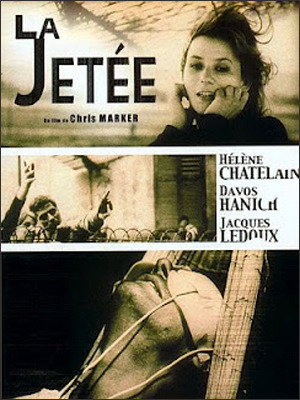
Titre : La Jetée
Année : 1962
Réalisateur : Chris Marker
Casting : Davos Hanich et Hélène Châtelain
Format : Court-Métrage
Durée : 28 min
Genre : Drame, Romance, Science-fiction
La Jetée est un court-métrage français sorti en 1962 ou 17 ans après la fin de la Seconde Guerre Mondiale dont les heures les plus sombres hantent et inspirent son réalisateur, le français Chris Marker. Avec Davos Hanich et l’inoubliable Hélène Châtelain, également réalisatrice, cette œuvre cinématographique est considérée comme cultissime par de nombreux cinéphiles.
Qualifié de “roman-photo” par Marker lui-même, il prend la forme d’une succession de photographies en noir et blanc sur lesquelles Jean Négroni pose sa voix profonde pour narrer l’histoire d’un homme “marqué par une image d'enfance.”

Cette uchronie post-apocalyptique se déroule dans un réseau souterrain parcourant la ville de Paris, qui a été détruite par une bombe atomique, lors d’une Troisième Guerre mondiale gagnée par les allemands. D’effrayants scientifiques, qui rappellent les médecins nazis ayant mené d’atroces expérimentations médicales au temps de la Seconde Guerre, souhaitent étudier le voyage dans le temps en se servant de prisonniers comme de cobayes. Notre protagoniste, ou “l’homme dont on raconte l’histoire” comme l’appelle Negroni, a le malheur d’être l’un d’entre eux.

Il va donc se retrouver dans un passé d’avant-guerre aux côtés d’une femme dont le visage le hante depuis sa plus tendre enfance ou encore dans un futur lointain où il aura l’opportunité d’essayer de sauver l’humanité.
Il se retrouvera face à un dilemme : choisir de rester dans le passé, dont la douceur et la joie contrastent avec son présent ou choisir le futur, rempli d'espoir mais dans lequel une lourde responsabilité lui incomberait.
Le format du “photo-roman” se met complètement au service de l’ambiance et du rythme saccadé de l’intrigue dans laquelle l’homme alterne entre phases d’éveil et de songes.
La qualité des photos, tant celle des personnages dont toutes les émotions sont retranscrites à l’écran que celles d’un Paris en ruines sont accompagnées par une bande originale éclectique et d’effets sonores qui ne font qu’accentuer l’angoisse et la sensation d'étouffement du spectateur.
La voix et le ton, distant et descriptif, du narrateur ainsi que le noir et blanc donnent à La Jetée des airs d’archives de guerre, ce qui accentue son réalisme, prouesse particulièrement impressionnante pour une œuvre de science-fiction de cette époque.
L’anonymat des protagonistes qui pourraient être à la fois tout le monde et personne invite le spectateur à se confronter lui-même au dilemme auquel le personnage devra faire face.
L’intrigue courte nous montre par ailleurs, en grande partie grâce aux choix techniques méticuleux du réalisateur, qu’une œuvre de science-fiction peut tout à fait se délester de la commune multitude d’effets spéciaux et de personnages aux destins complexes auquel le genre nous a habitué dans les années qui suivront la sortie de ce classique du cinéma français.
1 note
·
View note